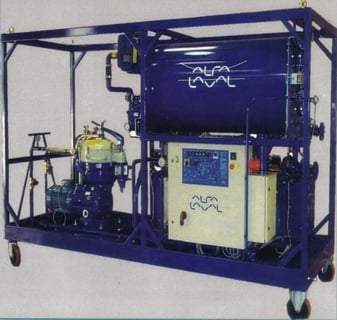 Contaminant like water in hydraulic fluids, lubrication, compressor oil or gear oil can lead to some serious problems (eg. machine breakdown). They should be eliminated to avoid the failure.
Contaminant like water in hydraulic fluids, lubrication, compressor oil or gear oil can lead to some serious problems (eg. machine breakdown). They should be eliminated to avoid the failure.
There are different ways of removing water from oil such as coalescing and centrifuging. However, both cannot effectively eliminate all phases of water from the oil.
The most efficient method to clean the oil is through vacuum dehydration. The ultimate guide below about vacuum dehydration oil purification system is to help you understand the topic better, so machine failures can be minimised.
What is vacuum dehydrator?
Vacuum dehydrator is an equipment designed to remove water, particulate, and gaseous substances from oil.
Water is known to be the most complicated and confounding contaminant in the oil. While the causes are still being studied, the co-existence of water with the oil can result in various physical and chemical transformations.
When the impurities in oil are not removed, your machine may experience severe damage or even break down. Consequently, production at workplace will be largely affected.
Sources of water contamination
Even under the best circumstances and controlled environment, it is still difficult to prevent water from entering the hydraulic system. Water can drip through external sources. Leaks on the external reservoirs, rain or routine wash-down can cause water to get into the equipment.
Water can also come from internal sources, including condensation and heat exchangers. The water can be present as dissolved, emulsified or free water.
The level at which the fluid cannot hold any more dissolved water is called saturation. Non-dissolved water in the fluid is considered as contamination. It is one of the frequent reasons for the machine's failure.
Why should the water need to be removed from the oil?
When left unattended, the water in the oil could result in system failures such as:
- Hydrogen-induced fractures
- Moisture contaminants in the oil may lead to hydrogen embrittlement and cause the compressor alloys in the system to fail.
- Corrosion
- Water can contribute to rust formation which damages the bearing surfaces of the machine.
- Impaired film strength
- Dissolved water affects viscosity of the oil which causes load zone forcing the oil to bump.
- Aeration and foam
- Moisture in oil can lower its interfacial tension (IFT). This can lead to the formation of aeration and foam in the oil.
- Microbial contamination
- Water can promote the growth of microorganisms like bacteria and fungi. As time passes, these microorganisms can restrict oil flow and plug system filters.
How do vacuum dehydration oil purification systems work?
Vacuum dehydrators use heat and vacuum to remove water from industrial oil. Below are the functions of vacuum dehydration oil purification systems.
- Remove water
Vacuum dehydrators are capable of removing water contaminants from oil. Basically, there are 3 phases of water in a standard system. These are free water, emulsified water and dissolved water.
- Free water
It is the water that is not mixed with oil. You can visually identify it from the oil. Moreover, free water can be removed easily by decanting or pouring the oil gradually from one container to the other. To increase water removal speed, a vacuum dehydration system is needed.
- Emulsified water
It is the water that has already blended with the oil. Emulsified water will not fall out or separate from oil when it is settled on the bottom. However, vacuum dehydrators can easily remove emulsified water in the oil.
- Dissolved water
It is the water that has been dissolved into the oil. It is similar to humidity and cannot be identified by human eyes.
After free and emulsified water is eliminated, the vacuum dehydrator focuses on removing dissolved water. In other words, removing dissolved water is a slow process.
- Remove gases
Vacuum dehydration oil purification system removes entrained gases such as benzene, methane, propane, etc. from your insulating oil.
- Remove particulates
Vacuum dehydrators eliminate particles to achieve low particle count in the oil.
Why should you use vacuum dehydration oil purification system?
Utilising vacuum dehydration oil purification system can provide the following benefits:
- Extends equipment’s performance for long term usage
- Eliminates machine downtime that is caused by contaminated oil
- Maximises oil life span
- Lower running cost
Conclusion
Eliminating water from oil is necessary to ensure system's proficient performance. To achieve this, a reliable vacuum dehydration oil purification system provides great help. It increases the life span of the oil and machines and minimise deterioration and degrading which cause machine breakdown.







